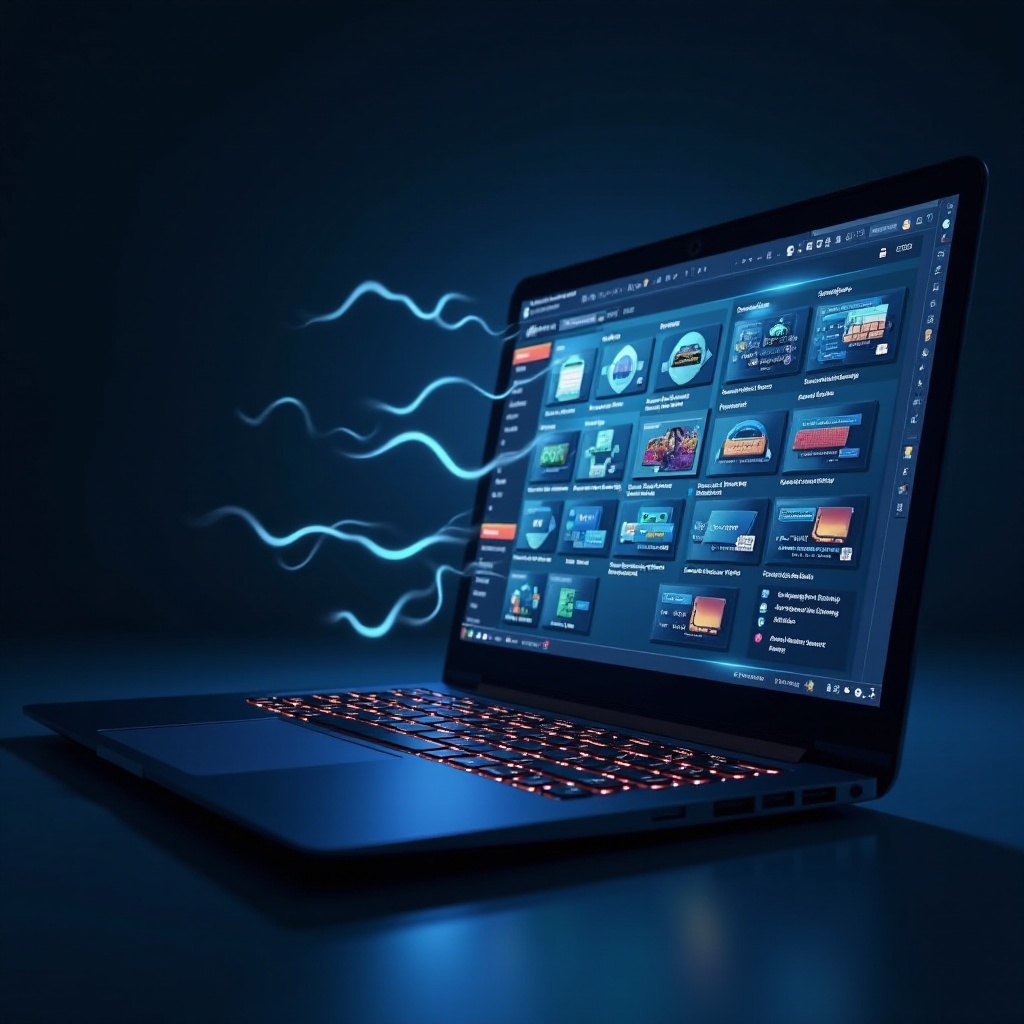Introduction
Gaming laptops are the epitome of portable computing power, designed to deliver unmatched performance for gaming enthusiasts. However, a common concern is their unexpectedly short lifespan compared to standard laptops. This discrepancy often leaves users puzzled about why such a major investment doesn’t endure as long. The reasons are multifaceted, involving both hardware and software components, thermal issues, and user interaction. By exploring these aspects, users can learn how to safeguard their laptops and enhance durability. In this article, we explore the factors contributing to the rapid decline of gaming laptops and strategies to mitigate these issues.

The Hardware Strain of Gaming Laptops
The allure of gaming laptops lies in their powerful processors and high-end graphics cards designed to handle the latest games’ demands. These sophisticated components require increased power, generating substantial heat and placing considerable stress on the laptop’s internal hardware. Constricted spaces within laptops limit airflow, which contrasts with the spacious interiors of desktops. This limitation accelerates component degradation over time.
Moreover, high-speed cooling fans operate frequently to dissipate heat, contributing to mechanical wear. Regularly pushing the components to their limits during prolonged gaming sessions increases their risk of premature failure. When components are run at maximum capacity to process complex graphics for extended periods, it emphasizes power consumption and heat issues, leading to a shorter overall lifespan. From here, we transition to the critical thermal challenges that further exacerbate these hardware strains.
Thermal Challenges with Gaming Laptops
Heat is electronic equipment’s nemesis, particularly in gaming laptops, complicating effective thermal management. Although manufacturers employ diverse cooling technologies, compact laptop designs limit efficient airflow. As a result, internal temperatures soar during demanding gaming sessions, causing long-term damage.
Such elevated temperatures can melt solder connections and warp sensitive components. This thermal stress not only damages the hardware but also diminishes laptop performance. Overheating leads to unscheduled shutdowns, throttling, and, eventually, hardware malfunctions. Despite ongoing advancements in cooling solutions, the high-performance components inherent in gaming laptops continue to present significant challenges allied with these thermal dynamics.
Impact of High-Performance Components
Gaming experiences are undeniably enriched with high-performance components, yet these elements significantly curtail hardware lifespan. Designed for ultimate performance, processors and GPUs in gaming laptops demand excessive power and generate intense heat, posing additional strain on internal circuits.
In addition, advanced components like SSDs expedite data processing but also depreciate quicker under constant high loads. While these parts offer exceptional performance, their continuous full-capacity use introduces stress that intensifies as thermal challenges compound over time. This intersection of performance and wear highlights the interconnectedness of hardware and software elements.
Software Factors Contributing to Short Lifespan
Beyond hardware, software aspects also critically influence gaming laptops’ longevity. Resource-intensive gaming applications often necessitate regular updates, demanding more computational power and driving hardware towards its operational limits.
Furthermore, various background processes aimed at optimizing gameplay can unintentionally exacerbate overheating problems when not properly managed. Over time, accumulated software clutter slows system performance, prompting users to push their laptops harder to achieve their gaming objectives. Having assessed these software elements, it’s pivotal to consider how a user’s environment and behaviors further contribute to a laptop’s lifespan.

Environmental and Usage Impacts
User environments and operational habits significantly impact a gaming laptop’s longevity. Factors like dust exposure, high humidity, or using laptops on beds or other soft surfaces that impede ventilation can worsen existing issues. Operating laptops on cushioned surfaces blocks airflow, heightening overheating risks.
User practices, such as consistently running high-end games without breaks or leaving the laptop plugged in continuously, intensify equipment wear. Neglecting workload balance and failing to schedule regular breaks can impede the laptop from cooling down adequately. Recognizing these user-related pitfalls effectively transitions us into discussing actionable strategies to extend a gaming laptop’s lifespan.
Strategies to Extend the Lifespan of Gaming Laptops
Confronting these challenges involves implementing practical measures:
Effective Cooling Solutions
- Cooling Pads: Employ cooling pads or stands to enhance airflow.
- Ventilation: Ensure vents stay unobstructed, with laptops operating in well-ventilated, cool spaces.
- Thermal Paste: Occasionally refreshing thermal paste can enhance heat dispersion.
Battery Management Tips
- Unplug When Charged: Avoid perpetual charging; rely on battery power periodically.
- Battery Saving Modes: Employ power-saving settings outside gaming contexts for reduced strain.
- Calibration: Regularly calibrating the battery promotes its overall health.
Regular Maintenance and Care
- Cleaning: Clean fans and vents to thwart dust accumulation.
- Software Maintenance: Streamline software by removing unessential programs and defragmenting the drive.
- System Checks: Deploy diagnostic tools to promptly address and rectify hardware issues.
By implementing these strategies consistently, users can significantly extend their gaming laptops’ operational life, yielding better returns on their investment and ensuring sustained gaming enjoyment.

Conclusion
Gaming laptops face numerous challenges, each contributing to their abbreviated lifespans. From powerful yet burdensome hardware and the complications of thermal inefficiency to unoptimized user habits, each factor plays a vital role. Nevertheless, with conscious attention to maintenance and use, users can meaningfully extend their laptops’ lives. Understanding these core principles empowers gamers to better manage their devices, securing prolonged performance and enjoyment.
Frequently Asked Questions
Why do gaming laptops overheat quickly?
Gaming laptops overheat quickly due to high-performance components that generate heat, limited internal space for cooling, and insufficient airflow mechanisms.
How often should I clean my gaming laptop to prolong its life?
Clean your gaming laptop’s vents and fans at least every three to six months to maintain optimal airflow and prevent dust build-up.
Is it bad to keep my gaming laptop plugged in all the time?
Constantly keeping your laptop plugged in can degrade battery health over time. Alternate between battery use and plugging in for optimal battery longevity.